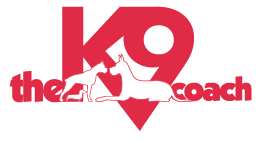Teaching Your Dog To Find Scent
Using the nose!
Teaching your dog scent work and object recognition isn’t just fun—it’s one of the best ways to engage their natural instincts, provide mental stimulation, and strengthen your bond. This guide will walk you through how to get started, recognize your dog’s alert signal, and even teach them to identify specific objects or toys by name. Perfect for dogs of all ages, this activity is a versatile and rewarding experience you can enjoy indoors or out.
Why Teach Scent Work?
Dogs are born with an extraordinary sense of smell. With 300 million olfactory receptors (compared to our 6 million) and a brain area dedicated to scent that’s 40 times larger than ours, sniffing is their superpower. Incorporating scent work into your dog’s life provides:
Mental Stimulation: Keeps your dog’s brain sharp and engaged.
Calming Benefits: Sniffing has a soothing effect and can help reduce anxiety.
Confidence Building: Success in scent work fosters a positive mindset and self-assurance.
Stronger Bond: Working as a team strengthens trust and communication.
Whether your dog is a curious puppy, a high-energy adolescent, or a senior in need of low-impact enrichment, scent work is a perfect fit.
Getting Started with Scent Work
Step 1: Choose a Target Scent
Start with something simple and appealing to your dog, such as a favorite treat or toy. As they progress, you can introduce more specific scents, like essential oils (ensure they’re dog-safe).
Step 2: Associate the Scent with a Reward
Hold the scent near your dog and let them sniff it thoroughly.
Reward them (with treats or praise) as soon as they interact with it.
Repeat this process several times until your dog shows interest in the scent every time it’s presented.
Step 3: Hide the Scent
Place the scent in an easy-to-find spot, like under a towel or behind a piece of furniture.
Encourage your dog to sniff it out by saying, “Find it!”
Reward them enthusiastically when they locate the scent.
Gradually increase the difficulty by hiding the scent in less obvious locations.
Step 4: Add a Verbal Cue
Once your dog consistently finds the scent, pair the behavior with a verbal cue like “Find it!” or “Search!” This helps them understand what you’re asking for.
Identifying Your Dog’s Alert Signal
An alert signal is the behavior your dog naturally offers to indicate they’ve found the scent. Here’s how to identify and refine it:
Observe Your Dog’s Natural Behavior
Watch how your dog interacts when they locate the scent. Do they sit, freeze, paw, nudge, or bark? Their natural reaction is likely their alert signal.Reinforce the Alert
Each time your dog finds the scent, mark the behavior (e.g., with a clicker or “Yes!”) and reward them. This strengthens the connection between the behavior and the scent.Shape the Behavior
If you’d prefer a specific alert (e.g., sitting instead of pawing), wait for the desired behavior before rewarding. Over time, your dog will offer the preferred signal.Add a Cue
Introduce a verbal cue like “Show me!” or “Alert!” to prompt your dog to indicate when they’ve found the scent.
Teaching Your Dog to Identify Objects by Name
Once your dog has mastered basic scent work, you can teach them to identify and retrieve toys or objects by name. Here’s how:
Step 1: Choose a Target Object
Start with a single toy or item your dog enjoys, such as a ball or stuffed toy. Ensure it has a distinct scent or texture.
Step 2: Introduce the Object and Name
Hold the object and let your dog sniff it.
Say the object’s name (e.g., “Ball”) as they interact with it.
Reward them with a treat or praise every time they engage with the object.
Step 3: Reinforce Recognition
Place the object on the ground and encourage your dog to approach it by saying its name.
Reward them when they correctly identify the object.
Gradually increase the distance or add distractions to challenge their focus.
Step 4: Introduce Additional Objects
Add a second item, ensuring it’s distinct from the first.
Say the name of the target object and reward your dog only when they select the correct one.
Slowly increase the number of objects as your dog’s skills improve.
Step 5: Combine with Scent Work
For added complexity, hide the named object and encourage your dog to “Find [Name]!” This merges verbal and scent cues, sharpening their skills further.
Tips for Success
Stay Consistent: Use the same names and cues to avoid confusing your dog.
Keep Sessions Short: Limit training to 5-10 minutes to maintain your dog’s enthusiasm.
Be Patient: Every dog learns at their own pace. Celebrate small victories!
Use High-Value Rewards: Reinforce your dog’s effort with treats, toys, or praise they truly enjoy.
Mix It Up: Rotate scents and objects to keep the activity fresh and engaging.
Advanced Games and Applications
Fetch by Name
Scatter multiple toys and ask your dog to retrieve a specific one (e.g., “Bring me the ball!”).Hide and Seek with Objects
Hide a named object around the house and ask your dog to find it.Sorting Objects
Teach your dog to group or sort toys based on their names or categories (e.g., “Bring all the balls!”).
Why Scent Work and Object Recognition Are Worth It
Scent work and object recognition provide countless benefits for dogs and their owners:
They engage your dog’s natural abilities, keeping them mentally and physically stimulated.
They strengthen your bond through teamwork and trust.
They’re practical skills that can be used for real-life tasks, like finding keys or retrieving items.
Most importantly, they’re a fun, rewarding way to spend time with your dog—rain or shine.
Start small, stay consistent, and enjoy the journey. If you’d like personalized tips or help refining your dog’s skills, don’t hesitate to reach out—I’m here to help you every step of the way!

